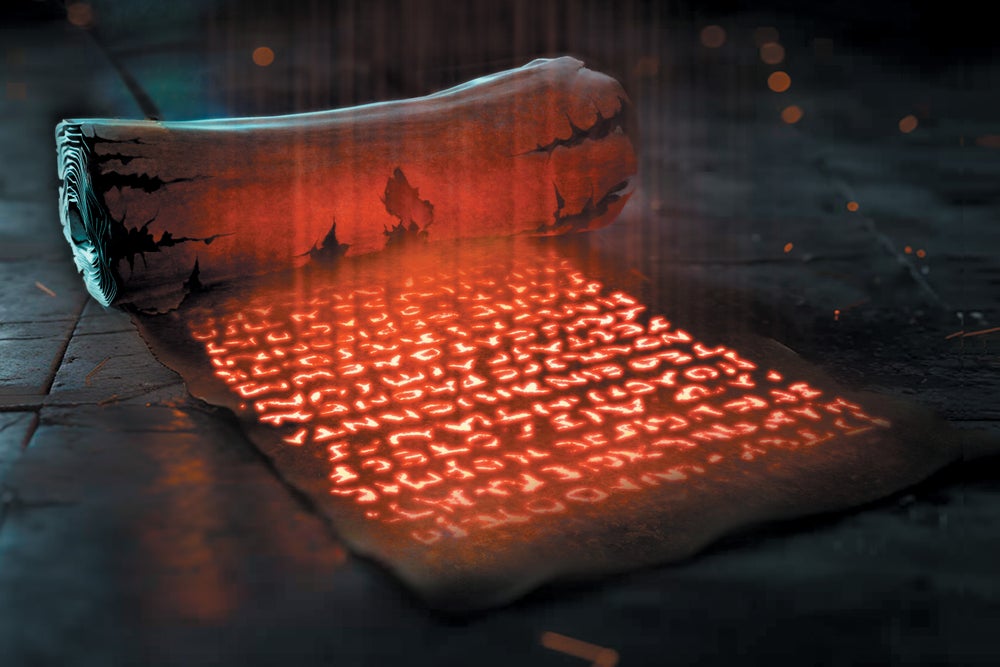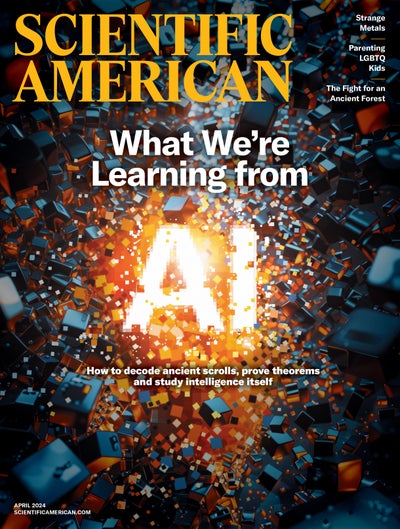| | | Dear Friend of Scientific American,
We've all heard a lot of hype, hope and fear about artificial intelligence in the past year. Our special package on AI in the April issue of Scientific American highlights some of the most interesting examples of how AI is actually being applied (including God chatbots, seriously). One of my favorites of the bunch is this story about a competition to train AI to read charred scrolls that were buried by the volcanic eruption of Mount Vesuvius in the year 79 C.E. Thanks to AI, and many clever volunteer and professional decoders, we now can now read for the first time part of a millennia-old tract on pleasure.
Many parents of children who are LGBTQ+ are desperately trying to protect their kids from discrimination and moral panics, and provide them with proper health care, safe communities and welcoming schools. Research overwhelmingly shows that supportive parents help non-conforming kids thrive, as our story in this month's issue shows. It's a hopeful story about parents learning from and for their kids, and supporting other families in creative ways.
A newly discovered class of materials aptly named "strange metals" are bending the rules of physics. Physicist Douglas Natelson explains how their electrons act like a soup of quantum entanglement – which is all fascinating and could have unpredictable practical applications. One of the things I enjoyed about this story is the clever metaphors, which along with some gorgeous graphics makes it fun and easy to appreciate the weirdness in strange metals.
Our Science of Health column is always full of practical, evidence-based advice. This month's article explains why and how strength or resistance training can add years to your life.
And coming back to volcanoes, I hope you enjoy this stunning photo of a lenticular cloud above Chile's Villarrica volcano.
We hope you enjoy the April issue of Scientific American and the rest of our stories, graphics, videos, podcasts and more on our website. I am wishing you clear skies for the April eclipse!
Laura Helmuth
Editor-in-Chief
Scientific American | | | | | | | | | April Issue Highlights | | | | | | | | | | | | | | | | |
| | | | | | | Read the latest issue! | | How to decode ancient scrolls, prove theorems and study intelligence itself. | | | | | | | | | |  | |
To view this email as a web page, go here.
You received this email because you opted-in to receive email from Scientific American.
To ensure delivery please add chiefeditor@scientificamerican.com to your address book.
Unsubscribe Email Preferences Privacy Policy Contact Us








Comments
Post a Comment